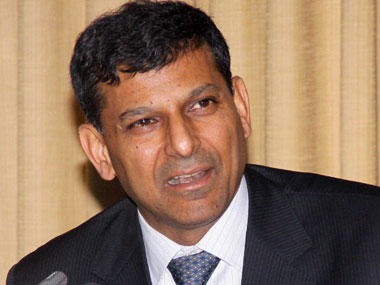Growth in eight core sectors continued to shrink in February, similar to the trend seen since December and offering no sign of revival in the economy. The slowdown in the core sectors to 1.4 per cent in February from 1.8 per cent in January, has come in the backdrop of a decline across all major sectors such as natural gas, refinery products, fertilizers and steel. The only bright spot, was perhaps the growth in coal sector, which grew by 11.6 per cent. This in turn offered a push for growth in the electricity segment, which expanded by 5.2 per cent in February from 2.7 per cent. [caption id=“attachment_2182103” align=“alignleft” width=“380”]
 PTI image[/caption] “The slide in core sector growth for the second month in a row as well as the contraction displayed by five of the eight core sector constituents in February 2015 is disappointing,” Aditi Nayar, senior economist at ICRA, said in a note. The weakness in core sector growth, along with falling inflation expectation of households, would logically put pressure on Reserve Bank of India (RBI) governor, Raghuram Rajan, to cut rates as early as 7 April. However, the inflation trend in recent months, the impact of unseasonal rains and fresh tensions in southwest Asia won’t give a cautious RBI much incentive to rush the rate cuts in the absence of favourable data. But,
as Firstpost reported earlier
, a section of economists have already forecast a rate cut next week citing prolonged slowdown in real economy. Rajan, who has cut the central bank’s key lending rates twice this year, will have to continue with rate easing to push banks to cut their loan rates, which hasn’t happened yet. Hence, there is pressure on RBI to give further cues to banks to make them pass on the benefit of lower rates to common man. Secondly, the continuing decline in the core sector growth also puts a question mark on the credibility of the rebased GDP growth numbers, which forecast a growth of 7.4 per cent for the fiscal year 2015. For this number to hold true, the manufacturing sector should grow at around 6.8 per cent, which looks difficult as of now. Core sector data covers the infrastructure industries and has a weight of 38 per cent in the Index of Industrial Production. “Since December, there has been a continuous decline in this growth rate. Five of the eight sectors have shown negative growth rates, which is worrisome as four of them also had low or negative numbers last year,” rating agency Care said in a note. “These numbers are reflective of stagnation in the infra space. Quite clearly there has been limited traction here,” the agency said. So far, none of the key growth indicators in the economy, be it bank credit growth, auto sales and factory output numbers seem to supporting the high growth story as scripted by the rebased GDP numbers. Going ahead, if the growth scenario doesn’t change, the government’s statisticians will have a tough time explaining the GDP numbers. (Data support from Kishor Kadam)
PTI image[/caption] “The slide in core sector growth for the second month in a row as well as the contraction displayed by five of the eight core sector constituents in February 2015 is disappointing,” Aditi Nayar, senior economist at ICRA, said in a note. The weakness in core sector growth, along with falling inflation expectation of households, would logically put pressure on Reserve Bank of India (RBI) governor, Raghuram Rajan, to cut rates as early as 7 April. However, the inflation trend in recent months, the impact of unseasonal rains and fresh tensions in southwest Asia won’t give a cautious RBI much incentive to rush the rate cuts in the absence of favourable data. But,
as Firstpost reported earlier
, a section of economists have already forecast a rate cut next week citing prolonged slowdown in real economy. Rajan, who has cut the central bank’s key lending rates twice this year, will have to continue with rate easing to push banks to cut their loan rates, which hasn’t happened yet. Hence, there is pressure on RBI to give further cues to banks to make them pass on the benefit of lower rates to common man. Secondly, the continuing decline in the core sector growth also puts a question mark on the credibility of the rebased GDP growth numbers, which forecast a growth of 7.4 per cent for the fiscal year 2015. For this number to hold true, the manufacturing sector should grow at around 6.8 per cent, which looks difficult as of now. Core sector data covers the infrastructure industries and has a weight of 38 per cent in the Index of Industrial Production. “Since December, there has been a continuous decline in this growth rate. Five of the eight sectors have shown negative growth rates, which is worrisome as four of them also had low or negative numbers last year,” rating agency Care said in a note. “These numbers are reflective of stagnation in the infra space. Quite clearly there has been limited traction here,” the agency said. So far, none of the key growth indicators in the economy, be it bank credit growth, auto sales and factory output numbers seem to supporting the high growth story as scripted by the rebased GDP numbers. Going ahead, if the growth scenario doesn’t change, the government’s statisticians will have a tough time explaining the GDP numbers. (Data support from Kishor Kadam)
Anemic core sector growth puts more pressure on RBI to cut rates again
Dinesh Unnikrishnan
• April 1, 2015, 10:49:44 IST
The weakness in core sector growth, along with falling inflation expectation of households, would logically put pressure on Reserve Bank of India (RBI) governor, Raghuram Rajan, to cut rates as early as the 7 April policy announcement.
Advertisement
)
End of Article